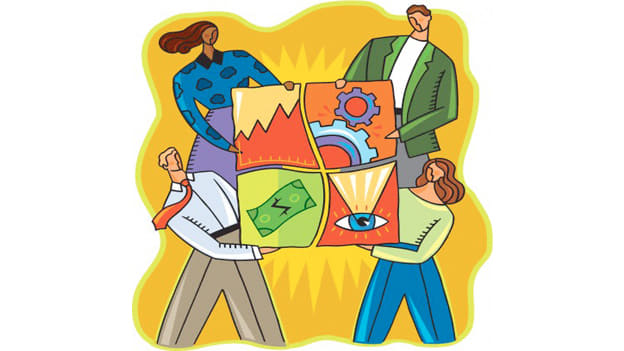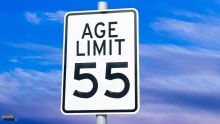Psychological Safety: Enabling interpersonal risks

Psychological safety at the workplace goes beyond traditional ideas of openness and conversation. Amy Edmondson describes psychological safety as “people’s perception of the consequences of taking interpersonal risks”. In simpler terms, Psychological Safety is simply the ability of an employee to take risks at the workplace without the fear of embarrassment if they fail.
When members of a team feel psychologically safe, they are more productive. More importantly, they are happier. And a happy workforce is a more efficient workforce.
But how does that tie into the current climate? How do we create a psychologically safe workplace when the workplace is so scattered? How can organizations try and ensure psychological safety for their employees? Three professionals from across industries shared their experiences with us. Their names have been changed on request. Examining psychological safety through the lens of their experiences, this is what we learned -
Vulnerability is not weakness
“Leave your worries at home when you come to work” is an old adage that is still used in a lot of offices. That trend has been shifting over the past decade, but there are still a lot of people who find it difficult to talk about the issues they face.
In a study of over 1000 men, it was revealed that for 32% of the respondents, work was the biggest factor affecting their mental health.
Aleister Budgen, who runs a data analytics company says “The pandemic hit my business hard. But thankfully, my boys (his employees) battened down the hatches, took voluntary pay cuts, and got back to work trying to keep this company afloat.” But as the pandemic wore on and the company kept taking hits, the pressure on the team kept increasing. “Everyone knew we were at the end of our rope. Everyone was dreading the impending confirmation, but they were internalizing it.”
It was then that he decided he needed to act.
He gathered his team of 7 employees into their conference room, and he spoke. “I just talked to them as if I was talking to someone from my own family. I shared with them all of my fears, frustrations, doubts, and anxieties about this business, and whether it would live to see the new year.” Aleister’s openness and willingness to be vulnerable in front of his employees gave them the confidence to open up and share their own stories and stresses.
By the end of the nearly 2-hour meeting, the team felt a lot lighter and closer to one another. And with the “troops together in the trenches” mindset, the company was able to stay afloat after all.
Less (surveillance) is more
Creating an environment of trust is more than just handing out opportunities.
Employees also need to feel like they own their tasks and can accomplish it with minimal hand-holding or micromanagement.
Given the current situation, coupled with how WFH has historically been viewed, companies have been concerned about productivity taking a hit over the past year. In a poll by Gartner, it was learned that 16% of respondent HR leaders admitted to using employee monitoring tools more frequently during the initial months of the pandemic.
Mathew Ryan, a lawyer working in the Project Finance team of a leading law firm says “I thought having to work from home would give me some respite. However, having my boss constantly emailing and calling me, asking for updates and if I remembered to add X or Y detail in the transactions we were working on just got too much.”
For Matthew, it reached a state where he lost almost all his confidence in himself and started second guessing himself and struggled on tasks he could earlier do with ease. “Eventually, I started approaching my team members and my boss for the smallest of things.”
Allowing subordinates to take ownership of their tasks is vital in creating a psychologically safe workplace.
‘S’ stands for security
These days, working in high stress environments, employees are generally apprehensive of doing anything that they believe may affect their job security. Allowing employees to make mistakes and learn from them is key in creating an environment where team members look forward to taking an initiative.
Psychological safety does not mean risk averse. As a matter of fact, it means making team members believe that risks are welcome, and that even some risks that do not pay off can be a lesson instead of a death knell for their career within the organization.
Rhea Sharma, AVP - Client Advisory at an investment firm, recalls her first forays into high value transactions, “I was so nervous, all the time. It was fine while I was doing just due diligence and research. But handling my first HVT was nerve wracking.” For Rhea, the support of her manager and team members, of whom she was, at the time, the junior-most, was vital. “After the first one, the rest just came so easily. But that first one would never have been possible had it not been for the belief and support my team showed in me.”
Psychological safety is non-negotiable for true inclusion
In a VUCA world, diversity is core to innovation, and to harness the power of diversity, inclusion and thereby, psychological safety is a non-negotiable. Diversity is more than just the newest fad in hiring practices. It’s been well documented that diversity without true inclusion is useless.
Psychological safety, at its core, is about being able to be open, to share, and take interpersonal risks without the fear of repercussions.
And for an employee, feeling included in all facets of their job, feeling like they have ownership of their work rather than just being told what to do is important. Only if they feel included will an employee will feel like a valuable part of the team.
As mentioned in the beginning, psychological safety is about more than just openness and encouraging conversation. Google found this out when in a review of their own teams, they learned that creating psychological safety is the very first step in improving their overall team performance.
The modern workplace is evolving. Employees are increasingly being viewed as the people they are rather than workers. With employees spending a major chunk of their day at work, there has been a recognition for the need to create a space where they feel at peace - not just as a business decision to enhance productivity, but as a means to provide a psychologically safe environment for the people in the organization to thrive in.
As employers become increasingly cognizant of the significance and need for psychological safety, how they tie this into their workplace practices and cultural fabric will determine how truly safe, valued and included their employees feel.
















